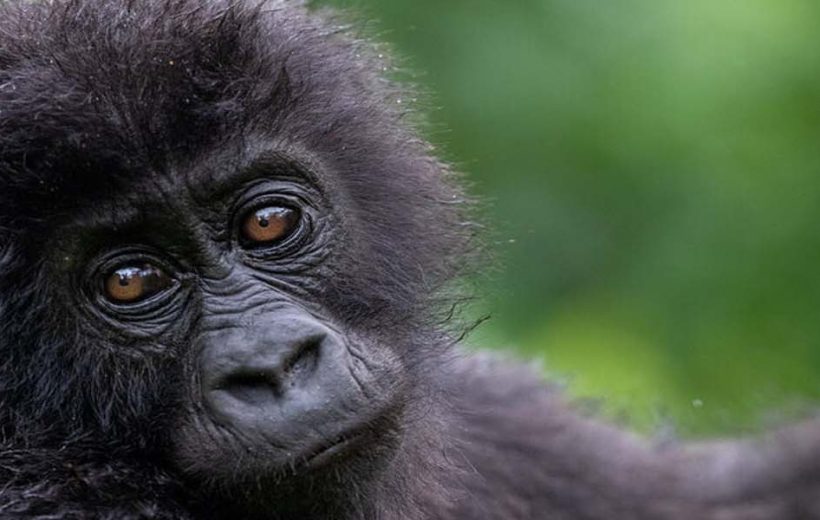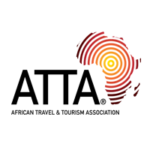Democratic Republic of Congo is another great destination on the African continent. The country is located in Central Africa but recently joined the East African community
With a land area of 2,345,409 square kilometers, DR Congo is the largest country in sub-Saharan Africa and 11th in the world. It neighbors South Sudan to the northeast, Uganda, Rwanda, Burundi, and Tanzania to the East, Zambia to the south, Angola to the southwest, the Congo Republic to the west, and the Central African Republic to the north.
The country has a small coastline with the Indian Ocean on the western part covering 40 kilometers. Kinshasa is DR Congo’s Capital city and it is located along the Congo River. It is Africa’s 3rd largest city with over 15 million people. The overall population in the Democratic Republic of Congo is over 100 million people making it the fourth highly populated country on the African continent.
Just like many African countries, DR Congo was once colonized by Belgium but eventually gained its independence in 1960. The country is endowed with natural resources including very precious minerals that are highly demanded and it is on this basis that there is a lot of exploitation, instability, and corruption as many seek to extract these minerals illegally.
The country has also faced many civil wars that resulted in loss of lives and many fleeing to neighboring countries for safety. Uganda so far has the highest number of Congolese refugees and many are expected to cross to Uganda because of the ongoing military conflicts between the different rebel groups including the M23 and the Congolese army. A lot of Congo is remote and inhabited and many rebel groups take advantage of this. The total number of rebel groups in Congo is estimated to be over 100 and they often attack the local communities of unarmed civilians.
This has posed a great threat to even tourism as protected areas are often invaded by many poachers looking to get food to eat. Wildlife conservation in DR Congo is highly threatened. Over 100 rangers in Virunga National Park have been killed in the line of duty and the park is sometimes forced to close.
The People
Democratic Republic of Congo is the most culturally diverse country on the Continent with over 200 ethnic groups. It is estimated that over 700 local languages are spoken in the country but French is the official and uniting language in the country. This is followed by widely spoken local languages that include Lingala, Swahili, Kituba, and Tshiluba.
With this great diversity comes a rich culture and heritage and despite living in modern times, there are many parts of DR Congo that are still remote. Here you can enjoy authentic African culture getting to know more about the people’s ways of life. The Congolese people are very sociable but luggage barriers are often a problem especially when coming from an English-speaking country. But nevertheless, you can still communicate as there are a few people who can speak English.
Wildlife
DR Congo is the most wildlife-diverse country on the continent. A lot of it is covered by tropical rainforests and is traversed by the Congo River. The Congo River is the world’s deepest River and World’s second-largest River by discharge. The river covers a length of 4,370 kilometers and the Congo basin in general is over 4,000,000 square kilometres. This is a home to many wildlife species with some protected areas and up to 4 world heritage sites.
There are 10 national parks and 10 national reserves in DR Congo including the famous Virunga national park. Despite the security threats, poaching and land encroachment still hold and protect a reasonable number of wildlife species. Notable national parks include Kahuzi Biega National Park, Salonga National Park, Garamba National Park, Virunga National Park, Upemba National Park, Lomami National Park, and Maiko National Park among others.
The country has several endemic species that occur only there and can therefore not be found in any other place. Eastern lowland gorillas are among the wildlife species endemic to the Congo forests. These live in the forested mountains of Kahuzi and Biega in the Eastern part of the country. They have over 95% DNA similar to humans and live in families that are headed by dominant males and vegetation with over 99% of their diet consisting of plant vegetation.
Mountain gorillas are outstanding primate species endemic to the Virunga massif and Bwindi impenetrable forest in Uganda. In DR Congo, mountain gorillas live in Virunga National Park, Africa’s oldest national park. There are many other primates here including golden monkeys, colobus monkeys, blue monkeys, patas monkeys, and many bird species.
Four of the big five mammals also occur in DR Congo with both savanna and forest elephants, buffaloes, leopards, and lions. Other wildlife species that you can only see in DR Congo include the Okapis. Because of the insecurity threats, however, tourism and wildlife safaris are minimal.
Getting there
The country can be accessed by both air and water. There are over 54 airports and airstrips but 4 are main and properly functioning. Ndjili International Airport is situated in the Capital Kinshasa and serves the nearby areas. Mbuji-Mayi is DRC’s second-largest city located in the southern part of the country. It is served by Mbuji-Mayi Airport. DRC has other major cities including Lubumbashi, Kisangani, and Goma with international airports as well namely Lubumbashi International Airport, Bangoka International Airport, and Goma International Airport respectively.
By water, the country has a small coastline along the Atlantic Ocean that acts as its major seaport. In the Eastern part are Lake Kivu and Lake Tanganyika and as water transport is not fully developed, there is a ferry that moves from north to southern Kivu. Water transport within the country is also possible on the many Lakes and Rivers but is oftentimes in local motorized or dug-out canoes.
Road transport is commonly used but many roads are not fully developed especially in the rural national park areas.
It is advisable to always apply for the Congo visa in advance at least a week before travel to avoid any inconveniences. Only nationals from Rwanda, Burundi, Zimbabwe, and Congo Republic are Visa exempt. Those from Kenya and Tanzania can get a visa on arrival and the rest have to apply or get one from the DR Congo Mission or embassy in their countries.
In case you want to visit Eastern DR Congo for primates you can access the country through Rwanda. You can fly into Rwanda’s Kigali International Airport and either head to north Kivu (Virunga National Park) or South Kivu (Kahuzi Beiga National) areas by road.
Best time to Visit
The country can be visited any time of the year. For the best mountain gorillas and Eastern lowland gorilla trekking experiences, you can visit in the dry season. The dry season months stretch from June to mid-September and mid-December to early March. You can however still enjoy any wildlife expedition in the wet season but ensure to have rain gear with you.
Because of the uncertainty in security, it is advisable to keep in touch with the local operator for any security updates. At Discovery Journey the safety of our guests is a priority and for destinations like DR Congo, we keep alert and up to date.
Our Featured
DR Congo
Safaris
Destination Map

Explore Dr Congo
The wildlife viewing in DR. Congo is generally excellent throughout the year. Both Mountain and Eastern Lowland gorilla trekking adventures can be done throughout the year.
For the best safari moments, it is however advisable to visit during the dry season from June to September and from December to March.
Ensure to be part of our Journeys of Discovery and adventures to DR Congo for exclusive primates and overall wildlife encounters.
If you have any questions regarding travel to DR Congo, please feel free to Contact Us on +(256) 785-179-586










